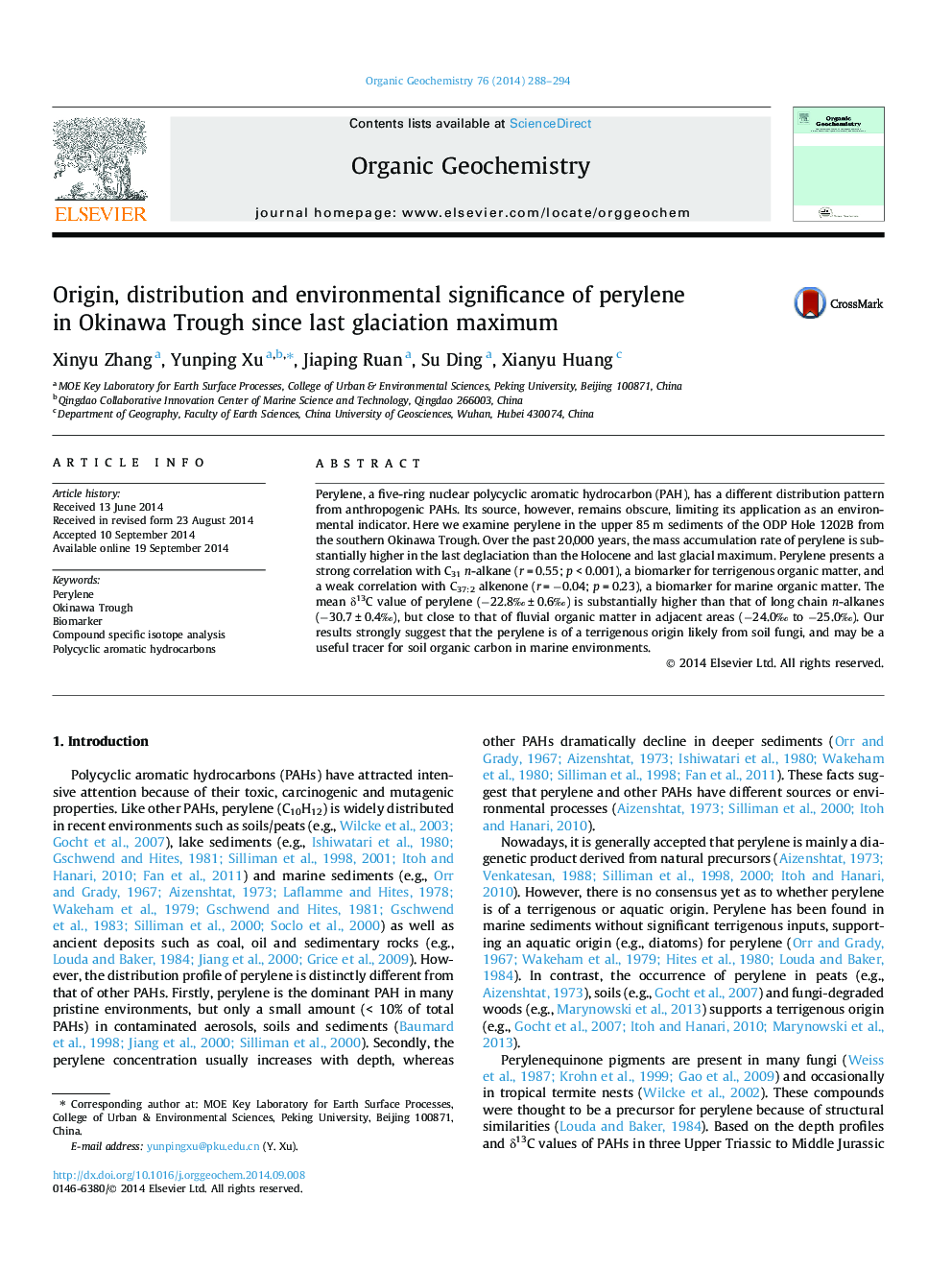| Article ID | Journal | Published Year | Pages | File Type |
|---|---|---|---|---|
| 5162259 | Organic Geochemistry | 2014 | 7 Pages |
Abstract
Perylene, a five-ring nuclear polycyclic aromatic hydrocarbon (PAH), has a different distribution pattern from anthropogenic PAHs. Its source, however, remains obscure, limiting its application as an environmental indicator. Here we examine perylene in the upper 85 m sediments of the ODP Hole 1202B from the southern Okinawa Trough. Over the past 20,000 years, the mass accumulation rate of perylene is substantially higher in the last deglaciation than the Holocene and last glacial maximum. Perylene presents a strong correlation with C31n-alkane (r = 0.55; p < 0.001), a biomarker for terrigenous organic matter, and a weak correlation with C37:2 alkenone (r = â0.04; p = 0.23), a biomarker for marine organic matter. The mean δ13C value of perylene (â22.8â°Â ± 0.6â°) is substantially higher than that of long chain n-alkanes (â30.7 ± 0.4â°), but close to that of fluvial organic matter in adjacent areas (â24.0â° to â25.0â°). Our results strongly suggest that the perylene is of a terrigenous origin likely from soil fungi, and may be a useful tracer for soil organic carbon in marine environments.
Keywords
Related Topics
Physical Sciences and Engineering
Chemistry
Organic Chemistry
Authors
Xinyu Zhang, Yunping Xu, Jiaping Ruan, Su Ding, Xianyu Huang,
